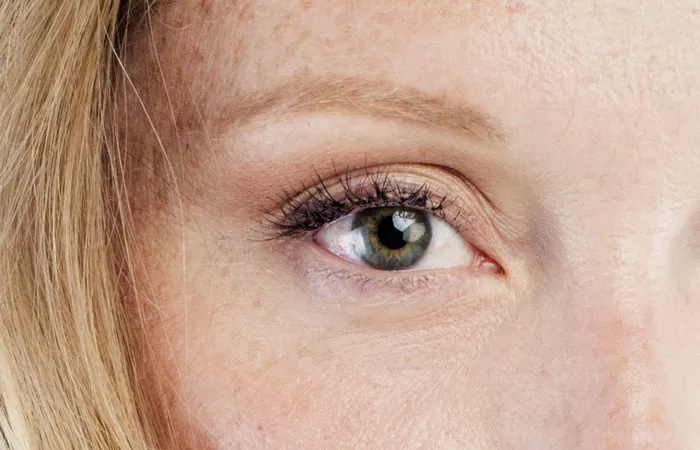Lower eyelid retraction is a medical condition that affects the positioning of the lower eyelid, causing it to be lower than normal. This condition can lead to various eye-related problems, including discomfort, dryness, and cosmetic concerns. In this article, we will delve into the details of lower eyelid retraction, exploring its causes, symptoms, and available treatment options.
What is Lower Eyelid Retraction?
Lower eyelid retraction, often simply referred to as eyelid retraction, is a condition characterized by the abnormally low positioning of the lower eyelid. In a healthy eye, the lower eyelid rests comfortably along the lower border of the iris, providing proper protection and moisture distribution for the eye. However, when the lower eyelid retracts, it pulls away from this normal position, exposing a greater portion of the eye’s surface.
Causes of Lower Eyelid Retraction
Understanding the underlying causes of lower eyelid retraction is crucial for accurate diagnosis and effective treatment. Several factors can contribute to this condition, including:
Thyroid Eye Disease (Graves’ Disease): One of the most common causes of lower eyelid retraction is thyroid eye disease, also known as Graves’ disease. This autoimmune disorder affects the thyroid gland and can lead to inflammation and scarring of the eye muscles and tissues, resulting in eyelid retraction.
Scar Tissue Formation: Previous eyelid surgery, trauma, or injury to the eye area can cause the formation of scar tissue. This scar tissue can contract and pull the lower eyelid downward, leading to retraction.
Aging: As we age, the skin and muscles around the eyes may weaken and lose elasticity. This natural aging process can contribute to lower eyelid retraction.
Congenital Factors: Some individuals may have a genetic predisposition to lower eyelid retraction, meaning they are born with a lower eyelid that is naturally positioned lower than normal.
Neurological Conditions: Certain neurological disorders can affect the muscles that control eyelid movement, potentially leading to lower eyelid retraction.
Symptoms of Lower Eyelid Retraction
The symptoms of lower eyelid retraction can vary depending on the severity of the condition. Common symptoms include:
Excessive Eye Exposure: The primary symptom is the exposure of a larger portion of the eye’s surface, which can lead to increased dryness and discomfort.
Dryness and Irritation: The exposed portion of the eye may become dry and irritated due to inadequate coverage by the lower eyelid.
Redness and Conjunctivitis: The exposed eye can become red and inflamed, making it susceptible to conjunctivitis or other eye infections.
Blinking Difficulties: Lower eyelid retraction may affect the normal blinking mechanism, leading to incomplete or infrequent blinking, which can further exacerbate dryness and discomfort.
Cosmetic Concerns: Many individuals with lower eyelid retraction are concerned about the cosmetic appearance of their eyes, as the condition can result in a more prominent “wide-eyed” or “staring” look.
Diagnosis of Lower Eyelid Retraction
To diagnose lower eyelid retraction, an ophthalmologist or eye specialist will conduct a comprehensive eye examination. This may include:
Visual Assessment: The doctor will evaluate the position of the lower eyelid relative to the iris and assess the degree of retraction.
Measurement of Eyelid Height: Precise measurements of eyelid height may be taken to determine the severity of retraction.
Assessment of Eye Surface: The doctor will examine the condition of the exposed eye surface, looking for signs of dryness, inflammation, or infection.
Medical History: A detailed medical history will be taken to identify any underlying conditions or previous eye surgeries that may be contributing to the retraction.
Treatment Options for Lower Eyelid Retraction
The choice of treatment for lower eyelid retraction depends on the underlying cause and the severity of the condition. Treatment options may include:
Artificial Tears and Lubrication: Mild cases of lower eyelid retraction can often be managed with the use of artificial tears and lubricating eye drops to relieve dryness and discomfort.
Eyelid Massage and Exercises: In some cases, eyelid retraction caused by scar tissue or muscle imbalance can be improved through specific eyelid exercises and massage techniques prescribed by an eye specialist.
Topical Medications: Steroid eye drops or ointments may be recommended to reduce inflammation and promote healing in cases related to autoimmune conditions or inflammation.
Surgical Intervention: For more severe cases of lower eyelid retraction, surgical correction may be necessary. Surgical procedures can involve repositioning the eyelid, removing scar tissue, or addressing muscle imbalances.
Management of Underlying Conditions: If lower eyelid retract
ion is associated with an underlying medical condition like Graves’ disease, managing that condition through medication or other treatments is essential to prevent further progression of the retraction.
Conclusion
Lower eyelid retraction is a complex eye condition that can have significant implications for eye health and cosmetic appearance. Early diagnosis and appropriate treatment are crucial for managing the condition effectively and minimizing its impact on daily life. If you suspect you may have lower eyelid retraction or are experiencing any of the associated symptoms, it is important to seek prompt evaluation and guidance from an eye specialist to determine the most suitable treatment approach for your unique situation.


